—-

‘Ivan Zulueta was born Juan Ricardo Miguel due to the Russian origin of that name, which was not allowed by anti-communist Franco dictatorship, in San Sebastián, Basque Country, Spain. Zulueta moved to Madrid in 1960 and enrolled in decoration courses. At the end of 1963, he was offered the opportunity of traveling in a merchant vessel to New York. There, he discovered pop art, Nouvelle Vague, the New American Cinema and artists such as Jonas Mekas and John Cassavetes. Coming back to Madrid in 1964, Zulueta enrolled in the Spanish Cinema School. He directed a couple of shorts in 35 mm. The first one, called Agata, based on a short story by Edgar Allan Poe. And the second one, called Ida y Vuelta (Round Trip), based on a short story by William Jenkins. However, he did not get his degree and the School was closed by the dictatorship. Zulueta would not be allowed to sign his works until Franco died because of this.
‘In 1968, Jose Luis Borau, his teacher in the Film School, produced a TV show called Ultimo Grito (Latest Trends). The anchormen were Jose Maria Inigo and Judy Stephen. Ivan Zulueta directed the show. The production means and budget were low and therefor among the methodologies employed for this production was to have friends take on the different positions and creative capcities required for its realization. In 1969, Un, Dos, Tres, Al Escondite Inglés (Hide and Seek) was produced. It was Jose Luis Borau’s first work as a producer of a full-length movie. The production was carried the same way as in the TV show Ultimo Grito. The film was a musical which made fun of Eurovision contest with a Richard Lester style. It was first released in Cannes Film Festival.
‘Jose Luis Borau provided Zulueta with unused film from his newly-created production company. Zulueta used it for experimenting mainly with tempo and editing. He also used other underground formats like 16mm or 8mm. Most of the time, the experimentation was related to re-fiming preexisting material in other formats and rhythms. At same time, Zulueta started a prolific career as poster designer. Ivan met Pedro Almodóvar and helped him in his first underground short movies. Zulueta also worked as assistant director for other directors such as Jaime Chavarri or Antonio Drove. Ivan Zulueta proposed to hit other non-underground segments of the public by directing a short movie and releasing it. The result: Leo Es Pardo (Leo is Dark); a short movie recorded with a 16mm camera. It was released in the Berlin Film Festival.
‘A Spanish architect interested in movies decided to help Zulueta financially. The planning was a 15-day filming. However, it was shot in real interiors owned by Zulueta and other friends, like Jaime Chavarri; and most of collaborators used drugs like heroin, that drove the planning and the budget to be highly increased. Pedro Almodóvar dubbed one of the female characters, but he was not credited. The relationship between the director and the producer was poorly damaged. Moreover, the film had a lot of problems to be commercially released due to its experimental and underground style; even though the dictatorship had fallen through. It was finally released in 1980. Ivan Zulueta was labeled as a problematic auteur and Arrebato became a cult movie.
‘Finally, his heroin addiction forced him to retire temporarily. Living in San Sebastián, he declined offers for new projects in filming industry. On the other hand, Zulueta continued with his career as poster designer. It is in these years when he produced his best known works for Pedro Almodovar, among others. He also started experimenting with photography. At the end of the 80s and the beginning of the 90s, Zulueta directed a couple of episodes for two different TV serials. The first one, called Parpados (“Eyelids”), was a love story between a couple of twins. The second one, called Ritesti, was a horror story. Both were traced by Zulueta’s style, visual obsessions, circular screenplay, format mixing (film and video) and a fragmented editing which reminded some of David Lynch movies.
‘By mid-90s, Zulueta came back to the silence. He continued his work designing posters. However, at the beginning of the 2000s, some personalities in the Spanish film industry rediscovered Zulueta’s early work: different expositions (paintings, posters and photography) were organized in different Spanish cities such as Madrid or Barcelona; his films were broadcast on TV and cinema again; his short movies were shown on film festivals and Arrebato was first launched on DVD. Un, Dos, Tres, al Escondite Inglés was released on VHS and some of his experimental shorts were launched on a limited DVD release. His death was reported on 30 December 2009.’ — collaged
____
Stills
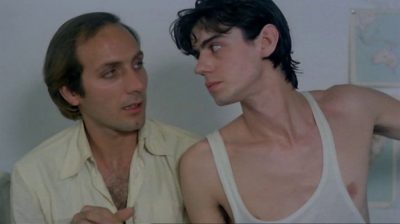


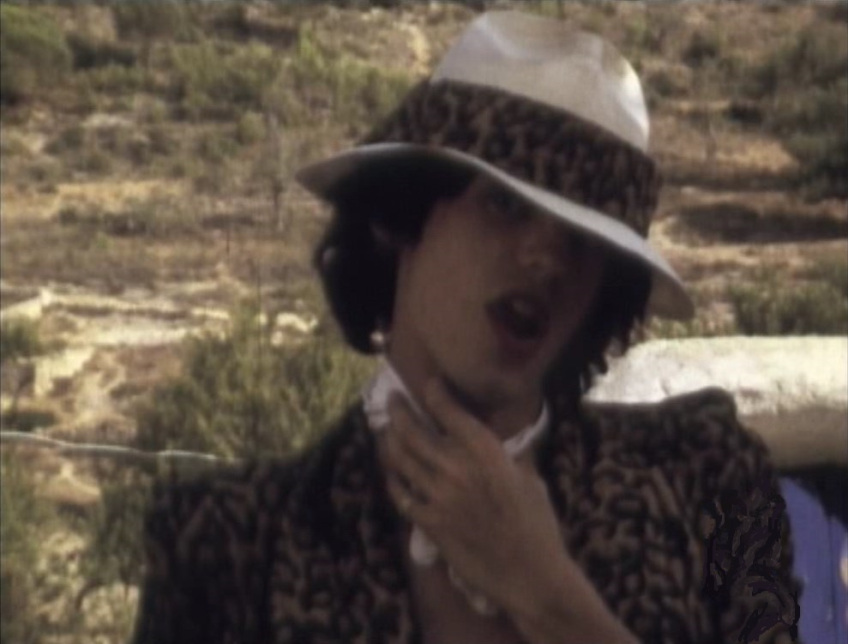
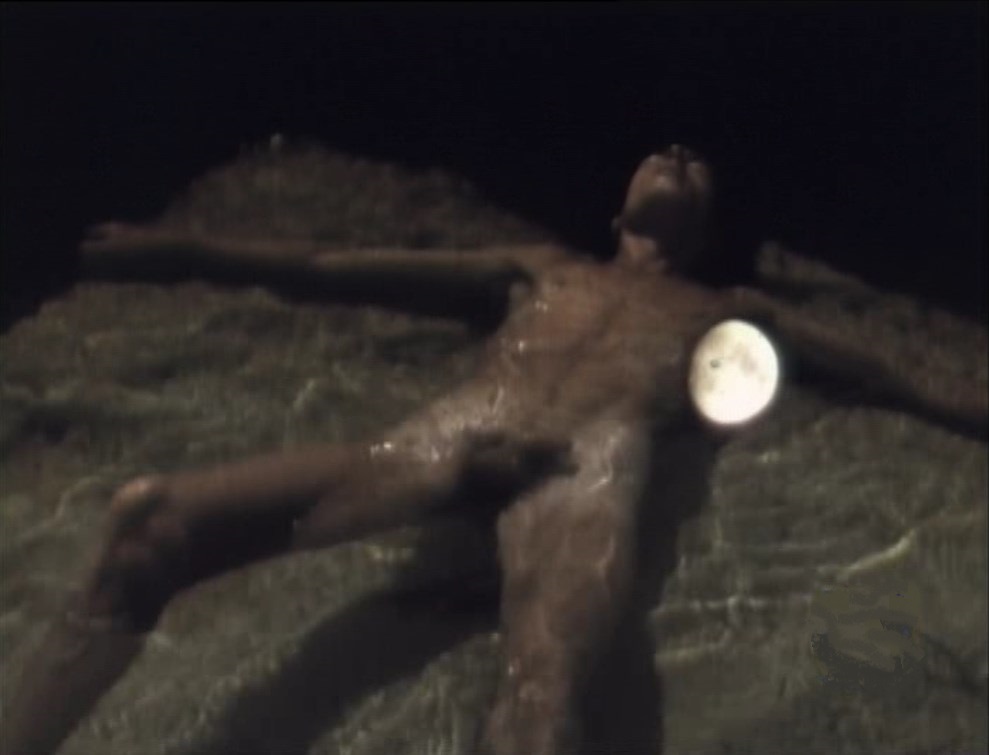

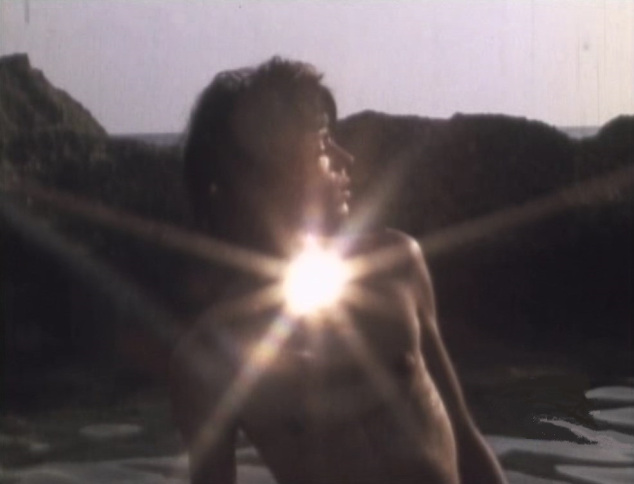

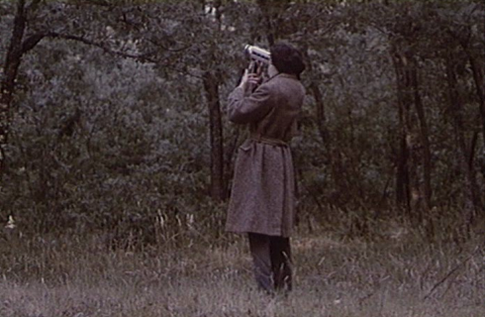
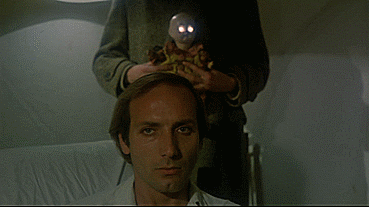





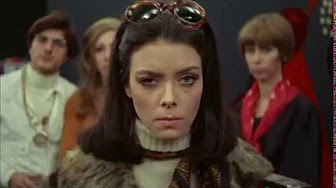




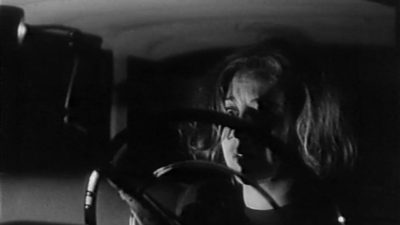
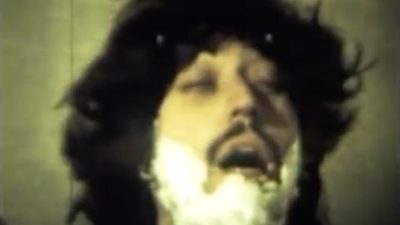
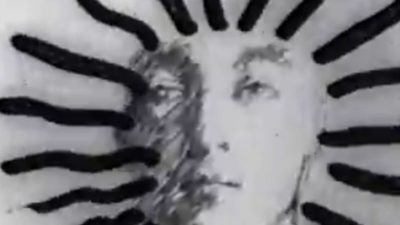

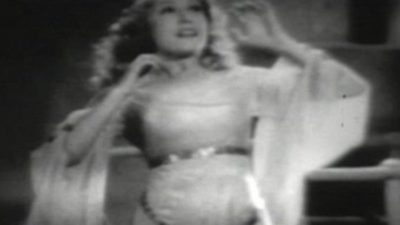





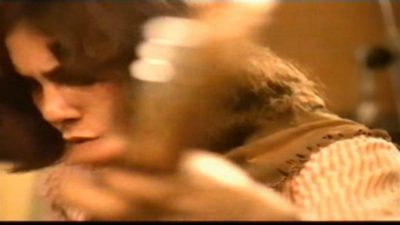
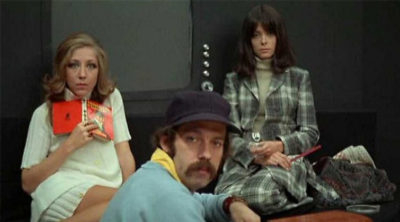
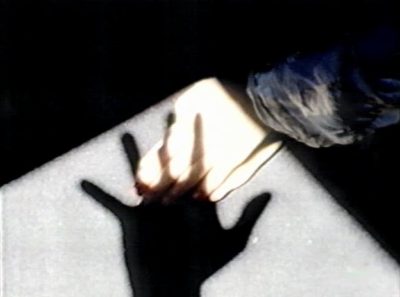
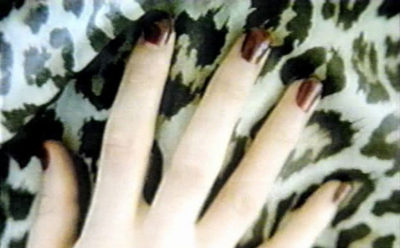


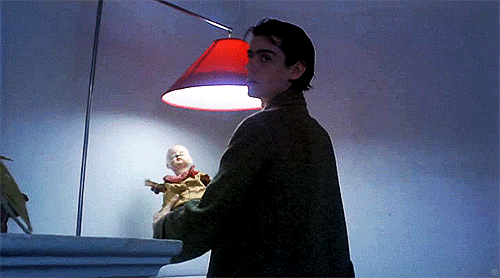

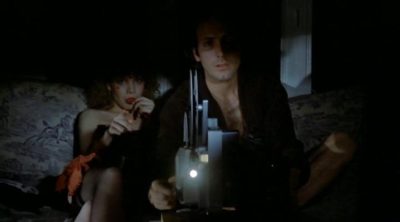
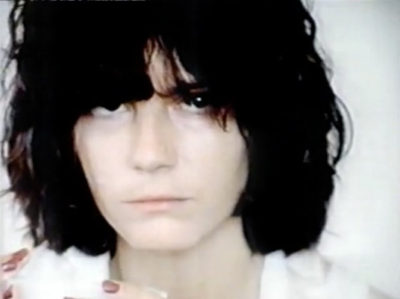
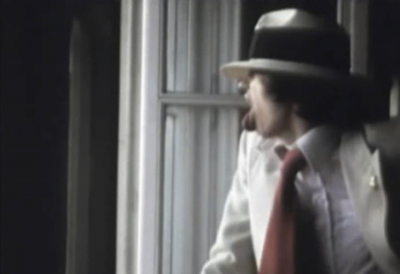


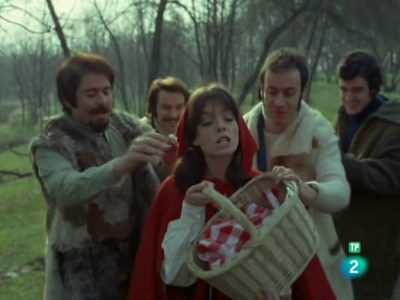
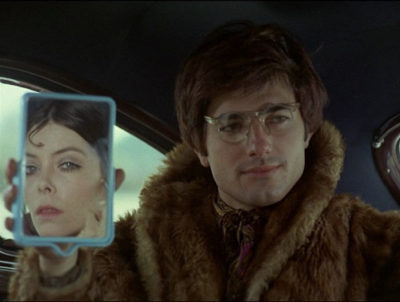
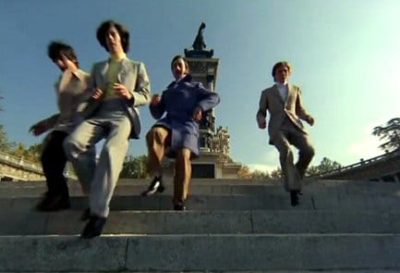


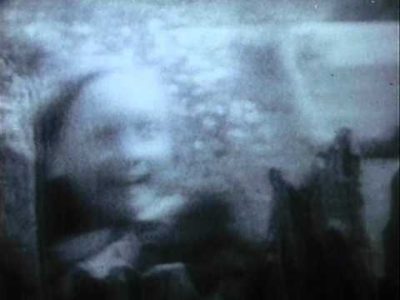

______
Further
Ivan Zulueta Website
Iván Zulueta’s Cinephilia of Ecstasy and Experiment
Mike Kitchell on Zulueta’s ‘Arrebato’
Mike Kitchell on ‘Leo Es Pardo’
Ivan Zulueta @ IMDb
‘The Act of Seeing with One’s Own Eyes: A Look at Ivan Zulueta’s ‘Lost’ Cult Film
Ivan Zulueta @ mubi
‘Arrebato. Ivan Zulueta’s cinematic rhythm
Frankenstein: Boris Karloff and Iván Zulueta
From Ecstasy To Rapture: Ivan Zulueta
Ivan Zulueta @ pobladores.com
The televisual practices of Iván Zulueta
How to Get High: Ivan Zulueta’s Arrebato
The Dark Heart of the Movida: Vampire Fantasies in Iván Zulueta’s “Arrebato”
Punctures and Molecular Politics: Topographies of the Body in Iván Zulueta’s Arrebato
The creative constants and authorship of Ivan Zulueta
Ivan Zulueta’s Spanish posters for Pedro Almodóvar
____
Extras
IVAN ZULUETA – En memoria de…
IVAN Z (fragmento inedito)
InFocusExtra Ivan Zulueta ABNewsTV
IVAN ZULUETA – ULTIMO GRITO
_________________________
Pedro Almodovar on Ivan Zulueta
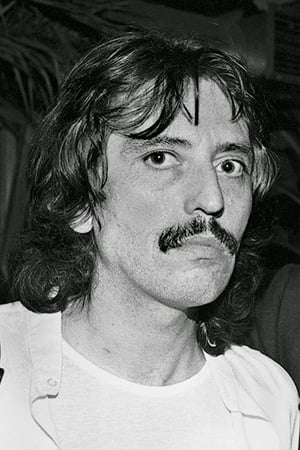
How to begin? I met Iván in Madrid when I had been living there for almost ten years. He was already known and admired for his work in television – that mythical series Último grito (The Latest Craze) – as well as Un dos tres al escondite inglés (One Two Three What’s The Time Mr Wolf) – a feature film credited to its producer José Luis Borau because Iván did not have the director’s union card – and one of the few examples of pop cinema made in our country at the end of the 1960s that was not shabby, that could stand comparison with any product of English psychedelia in terms of quality, albeit outdoing their irony, of course. Fans of Arrebato may not know this, but Iván Zulueta was a person with a great sense of humour.
We hit if off immediately; we were bound together by psychedelia, the American undergrounds, the earliest English pop, some friends in common, some enemies in common too, the new wave music being made in Madrid, Glam, comics, Cecilia Roth, an absolute hunger for cinema, and the fact that we were both shooting small films in Super 8. He was much better than me. I was a beginner with the camera when Iván was already an absolute virtuoso in his use of this instrument.
Arrebato (1979), his second work, a filmic testament right from the beginning of the shoot, wouldn’t be anything without the thousands of metres that Iván filmed in Super 8 throughout the previous years. Not for nothing was it the Super 8 camera (like the 16mm camera of Michael Powell’s Peeping Tom, although with a different meaning) that enraptures the prostrate and expectant bodies of the protagonists Will More and Eusebio Poncela, that ushers them to a better, or non-world. The only information the film gives us is that this non-world is a sort of void of reddish colour.
It is difficult to speak about Iván Zulueta and death.
It is very difficult to speak about his latter years, those immediately after Arrebato, when he was retired in San Sebastián, like Norma Desmond, but with all of his senses intact, and without having relinquished one iota of his exquisite sensitivity. Spanish cinema has just lost one of its most original filmmakers, and together with Erice, the one that managed to give his images the greatest aesthetic meaning. He never filmed a single banal image. The element in which he felt most comfortable was abstraction. The pure image, brimful of meanings but freed from the burden of fiction, always cushioned on a rich variety of soundscapes. David Lynch, but less shadowy and more pop. Psychedelia was his school, and he made genuine masterpieces in this style.
His work as a graphic designer and draftsman was inextricably linked to his cinematographic work. From the end of the 70s to the mid 80s he designed many wonderful film posters. I remember how impressed I was with the one for Furtivos (Poachers, 1975) and how much fun we had whilst he was designing the one for Entre Tinieblas (Dark Habits, 1983) or Laberinto de pasiones (Labyrinth of Passions, 1982). Even if he seems an ephemeral figure (I hope he doesn’t), Iván Zulueta bequeaths an incredibly rich and essential legacy to the history of Spanish cinema, in minor formats but possessed of extraordinary greatness. Arrebato reverberates with the same force as it did 30 years ago, the year it opened.
Spanish cinema loses a unique individual, and José Luis Borau his best disciple. I remember those days in his flat in Plaza de España in Madrid so clearly. Everything was charged with life, and we used to laugh so much!
______________
10 of Ivan Zulueta’s 15 films
_________
Ida y vuelta (1968)
‘Zulueta’s second film, Ida y Vuelta (Round Trip), is based on a short story by William Jenkins.’ — IMDb
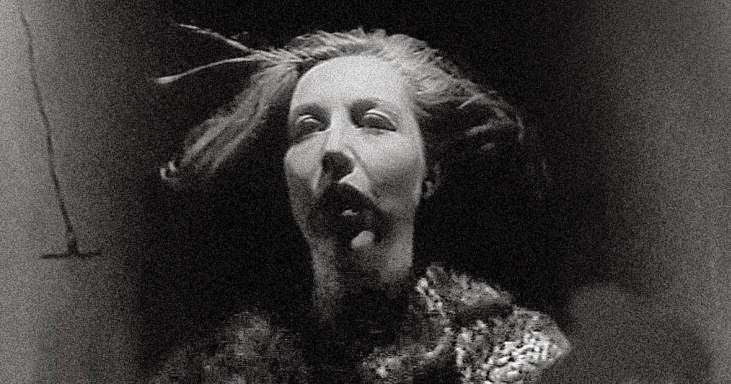
__________
Un, dos, tres… al escondite inglés (1970)
‘A group of Spanish fans of the best British pop music from the late sixties owned an odd record store, which only sold what they like. They decide to boycott the song “Lie, lie” that will represent Spain in a contest called ‘Mundocanal’ (parody of the music festivals of the time, as Eurovision). In order to accomplish the aforesaid, they will put in practice several stratagems to avoid that the selected bands would participate in the festival, whose performances will be happening throughout the film.’ — jsanchez
Excerpt
the entirety
__________
Kinkón (1971)
‘Zulueta began to draw the album covers and film posters for which he would become famous in the movida madrileña—the Madrid underground scene of the years of the transition to democracy—and beyond. He was also making experimental films, mostly in Super 8. Freed from audience and producer demands, he began to explore the sense-making and sense-destroying possibilities of montage and the immersive and perception-altering power of the manipulation of image velocity in a trio of short found-footage variations. The first of these is Kinkón (1971), a silent adaptation of Merian C. Cooper and Ernest B. Schoedsack’s 1933 classic, King Kong. Zulueta re-filmed a television broadcast of the original, and through creative subtraction and manipulation of camera speed, condensed the original’s feature length to an intensified seven minutes. The cathode-ray flicker and flattening that results from the re-filming defamiliarises the original, but its classical continuity mode of address continues to operate on the viewer, and the increase in velocity makes mesmerisingly urgent the dramatic plot of the original.’ — Senses of Cinema
the entirety
__________
Masaje (1972)
‘Using the technique of direct photography off the TV screen, he composes three minutes ‘in which we see, speeded up, the complete television programming on a day of union and military parades. There was a subliminal Franco, and we didn’t even submit it to the censors…’. The soundtrack of Masaje alternates effects, noises and sounds of all kinds. The result is a really frenetic visual ‘massage’ that exposes the viewer’s eye to fleeting movie images, ads and news reports in rapid-fire succession.’’ — Carlos F. Heredero
the entirety
___________
Frank Stein (1972)
‘Filmed before Arrebato, Zulueta’s Frank Stein is a very personal reading of horror cult classic Frankenstein (1931), filmed directly from its television broadcast and reducing Whale’s original to only three packed and dizzying minutes, during which the intimate monster evolves at an unusual rate.’ — Impakt.nl
the entirety
___________
Roma-Brecia-Cannes (1974)
‘Roma-Brescia-Cannes, made in 1974, could be called a lyrical home movie. P. Adams Sitney defines the lyrical film as one that “postulates the film-maker behind the camera as the first-person protagonist of the film. The images of the film are what he sees filmed in such a way that we never forget his presence and we know how he is reacting to his vision”.’ — Senses of Cinema
the entirety
___________
Aquarium (1975)
‘The 1975 Super-8 short Aquarium is Zulueta’s first available incursion into the psychodrama—in which the filmmaker dramatises a disturbed state of consciousness—in which appear lyrical passages of the kind that will be made by the fictional experimental filmmaker played by Will More in Zulueta’s 1980 feature Arrebato. Aquarium features the use of a timer to film vertiginous fast-motion shots of clouds passing over the cityscape, which alters the perception of the change-movement relationship: instead of seeing stably-shaped clouds that apparently move across the sky, the clouds’ shape can be seen to change as their position remains the same. After several of these exercises in perceptual alteration, the film settles in to focus on its protagonist, also played by Will More. By way of eye-line matches the distorted images are made to express the agitated interiority of More’s character. He is alone in his room in the Aquarium hotel (really Zulueta’s Madrid apartment overlooking the Plaza de España), making explicit the theme of agoraphobic isolation and anguish that one could imagine to be the conditions of production of most of Zulueta’s short films. More’s character is apparently overwhelmed by ennui and seeking escape through sources of stimulation. He eventually plugs into the television by placing his hand on the screen, which transports him into a rapturous state as he watches what looks a lot like Zulueta’s own Frank Stein. He later finds stimulation at the window of his room, discovering to his surprise that the city’s inhabitants are also speeding by in fast motion, before his agitation is further reflected in a fast montage of repeated zooms and views of the urban landscape from above. The penultimate sequence is a remake of part of Un chien andalou (1929), as a woman appears and the two characters act out the street sequence from Buñuel’s film. This apparently throws causality out the metaphoric window, and for the last minute of the film we see what looks like re-filmed footage of the final section of Roma-Brescia-Cannes.’ — Senses of Cinema
the entirety
__________
Leo es pardo (1976)
‘This short film of Ivan Zulueta is a masterpiece realized before “Arrebato” and one of the most disturbing short films that I’ve ever seen. Without a screenplay, the film experiments with the montage of still images and sound. Is indescribable. Heavily addicted to heroin at the time, he created a world on his own where pop art, the wild side of nature, and the obsession with the still unrevealed power of moving pictures get together.’ — collaged
the entirety
__________
A MAL GAM A (1976)
‘With the thirty-three minute A MAL GAM A he made in 1976, Zulueta brings the lyrical film into the territory of mystico-psychedelia. The cinema as drug, as vehicle for rapture—as will later be seen in Arrebato—is a theme of this most autobiographical of Zulueta’s experimental films (which could also be seen as a documentary of an agoraphobic mode of artistic production), the protagonist is played by the filmmaker himself (“Jim Self” is the trans-linguistic homophone that appears in the credits) and shot mostly in the family villa in San Sebastián.’ — letterboxd
the entirety
___________
Arrebato (1979)
‘Much could be said about Ivan Zulueta’s cult classic Arrebato (Rapture, 1980). As a philosophical manifesto for the cinema, it is complex, sensitive, and humorous in its treatment of the question ‘What is cinema, what does it do?’ The film is the story of a struggling horror director José Sirgado (Eusebio Poncela), who is haunted by a strange film sent to him by his ex-lover’s cousin, Pedro (Will More). Pedro sends the film to José in an attempt to uncover its mystery: a frame of Pedro sleeping has disappeared and been replaced with a blood red mark on the reel. The psychological disturbance of Pedro and José playfully manifests itself in the materiality of the film. Voice-overs of Pedro confuse the dialogue and his image pops up like a ghost in the everyday world of José. In addition, the film slips in and out of its narrative, and psychedelic sequences scramble the continuous montage. Like the transient and hallucinatory filmic layering of Cabin in the Woods (Joss Whedon, 2011), or Brian de Palma’s Blow Out (1980), Arrebato is a self-reflexive investigation of the cinematic and its affective nature. It explores the construction of the horror genre, the questions that cinema raises as to the difference between reality and fiction, and the problem of Hollywood and spectacle. At times, the film is so doubled over it seems that it is scared of itself! However, this review will not take these points any further. Much needs to be said about this rich film; indeed, it would make a fine subject for a dissertation. But the question that it also raises, which would be clouded by any heavy-handed theoretical or intellectual musings, is: how to have a good trip. Arrebato, in this context, is not just a love-letter to the cinema but is a love-letter to its hallucinatory powers and to the dark desires of the human mind and body. It is a love-letter to a state of amour fou. The film mimics the intoxication, confusion and self-destructiveness inherent to a passionate relationship and is an experiment for states of maximum intensity, as they exist between the ecstatic and joyful, and the horrific and nauseating.’ — Lauren Bliss
Trailer
Excerpt
Presentación de “Arrebato” por Iván Zulueta
*
p.s. Hey. ** milk, Hi, milk, welcome! Yes, Monty Python has acknowledged Topor’s influence on their animations, and it does show. How are you? ** David Ehrenstein, He is, yes. Adjani is very active here, doing lots of theater and also films that I guess are not being released in the States. But, yeah, she works pretty constantly. She does look just a little bit less plastic surgery-related scary than she did, so maybe some adjustments were made. ** scunnard, Hey! I’m good. Yes, sorry, I’ve been distracted, but I am thinking of suggestions. Thank you. I saw that Zak was starting a press. That’s great. It feels like a little renaissance or something. Okay, will do. Everyone, scunnard aka the amazing writer Jared Pappas Kelley is starting a publishing house, which is exciting news for lit, of course, and the also excellent writer Zak Ferguson, who was spotlighted here on the blog not long ago, is doing the very same thing. Jared/scunnard is giving a shout out on Zak’s press’s behalf to those of you might want a very cool home for your book or booklet. Here’s Zak’s/his shout: ‘Due to the amazing response and encouragement and enthusiasm of so many for Sweat Drenched Press, we have decided to open SUBMISSIONS for our special EXPERiMENTAE-Chaps, chapbook series, so if you want to be part of the EXPERIMENTAE series/imprint (that all chapbooks will be released under), well come on and send them Chapper-Chapper-CHAPBOOKS. Open from 20TH January- March 1st 2020, so just contact us over on sweatdrenchedpress@outlook.com. Only rule is, ensure it is not below 1,200 words or over the 1,600 word count, but, it doesn’t have to be exactly that, oh no no no, as a few hundred or a few thousand more words over never hurt nobody. Looking forward to reading your submissions. Best wishes, Zak Ferguson.’ ** Tosh Berman, I thought, or perhaps even knew, that you’re a Topor fan. Amazing how forgotten he is, even in France. Last night at the gallery opening, I mentioned I’d done a post on him to various French folks, and not a single one of them had ever heard of him, even though he was very, very famous here not so many decades ago. ** kier, Hey, k!!! Yep, he was the veritable renaissance guy, I’m so glad you like his stuff. I talked to Zac, and he suggested, and I agree, that, given how close it is, we should do a road trip and make the Schneider house a centrepiece, but check out other things in western Germany too. Make it a 2 or 3 day thing. We’ll hunt what’s in the targeted area, and you too, if you want. Zac drives. I do too, but my licence is expired. Oh, nice, about the class. And of course about her forefronting of Cady Noland. Not bad. I love ‘Send’, yeah. It and ‘Chairs Missing’ are my favorite Wire albums, I think. My day, hm … Oh, I’m happy because Manifesta, this big art fair/festival in Marseilles, wants to show Gisele’s and my installation work ‘Last Spring: a Prequel’. It’s hardly been shown, so, assuming that works out, it’s exciting. Otherwise, work and stuff, and then the opening. I find openings super boring and stressful, but it seemed to go really well. It was super packed, and people seemed really into the GIF works, and I met some cool people, so, yeah, it was actually pretty okay. Then I crashed. Okay day. Was your today unique or surprising or pleasingly mellow anything? Love, me. ** Ferdinand, Hi, man. Happy that you do. Ah, so you were here, and the weather cooperated. I saw the Hujar. I live really close to the JdP. I didn’t see the Bacon. I’m a weirdo who isn’t that into his work, which seems to shock everybody, but so it goes. It’s gotten quite nippy here too. Enjoy your indoors. ** Sypha, Hi. Good news if ‘The Tenant’ is being reprinted. Strange that it’s o.o.p, but obviously a lot of surprising things are. That Frasier joke only works if you know virtually nothing about France and have never been here. Cliche city. For instance, the majority of French movies and TV are comedies because the French love comedies, but those movies, etc. just don’t get released anywhere but here. So, yeah, the French = humorless is fake news. ** _Black_Acrylic, Hi. Yes, I hadn’t realised that was him in Herzog’s ‘Nosfertu’ until I did the post, for instance. Super glad you enjoyed the post, man. Nice record/track. Very sinuous, and, yeah, it is melancholy, isn’t it? Interesting. ** Nick Toti, Hi, Nick! Yeah, he has (or is) a lot of dots. Due for a big rediscovery, I reckon. I’m good. You? ** NLK, Hey. Thanks. Yeah, the new GIF novel works differently than the earlier ones. It has just one sequence per page rather than operating in stacks and in immediate juxtaposition. I want the individual sequences to hold the eye and attention solo and then to add up in accumulating memory rather than doing so in the war-like setting of the earlier novels that were divided into chapters, if that makes any sense. Almost like a book of thematically linked poems or something, in a sense. I think it has a different effect, but we’ll see. Sure, email me, and we can talk in whatever way is best. My email, if you don’t have it, is: denniscooper72@outlook.com. Best to you! ** Jeff J, Hi, Jeff. Cool, glad you dug it. Sypha suggested that ‘The Tenant’ might be about to come back into print. The opening seemed to go really well, from what I could tell. The installation: well, it was my things and paintings by a German/French artist. The GIF works were displayed kind of the only way they can be, i.e,. a table and chair with a laptop where people can sit and read/scroll through the work, and a large screen on the wall, in this case directly above the table, where people can watch the reading/scrolling. The only real difference is that the gallery used very large screens on the wall, which seemed to work really well. But, yeah, it worked. They were always being read by someone, and there were crowds of people watching. Good, it sounds like the best possible outcome re: the reading. Great, instructional while providing successful entertainment, the best. Dancey but noisy! Anywhere in the realm of, oh, the Oh Sees or that general sort of thing? And cool that the mixing is getting there. Nice. ** Steve Erickson, Hi. I know the earlier Errol Morris book, which I love. Everyone, Mr. Erickson has interviewed the often amazing and almost always interesting French filmmaker Bertrand Bonello about his new (to the US) film ‘Zombi Child’ for the venerable Brooklyn Rail, and go find out what their tete-a-tete revealed here. Huh, I don’t know ‘Jonathan’ at all. Never heard of it, I don’t think. Cool, I’ll go watch it on youtube. Thank you! ** Right. Today I concentrate the blog on the fascinating Spanish filmmaker Ivan Zulueta, a favorite of — and collaborator with — Pedro Almodovar, and a maker of very, very interesting films. You’ll dig his work if you give yourself the chance, I suspect. See you tomorrow.




 Now available in North America
Now available in North America 
Thank you Dennis!
Zulueta seems quite interesting. Reminds me of Carmelo Bene.
Great to hear Adjani’s working Here she is a few years back in a film she did with Nico’s son who looks exactly like his father. He has since then fallen apart
hey dee, nice day, i didn’t know ivan zulueta. i wanna watch the kinkon and frank stein films ’cause they sounded exciting, and they’re short which is good because i can have attention span issues. i was wondering, is it possible to get the track list of the music used in crowd? that would be total manna. yes yes yes i will absolutely do a mini-vacay in west germany! do you know if it’ll be possible for any of my friends to come along to the schneider house/germany (if they’re interested)? either way i’m 100% in. let me know what leads you have on stuff to do there. i’ve only barely been in germany, when i was a teen my family drove down to the netherlands and stayed two nights in two litle german cities in between driving, but that wasn’t a real visit. that’s incredible news about last spring! do you know when it would be if it happens? i’m glad the opening was okay! it sounds like it was a big hit. speaking of, you’re not going to england for the broken grey wires show are you? i assume not, but i’m gonna go to do my work (big wall drawing or something) so it would be a bonus if you were. my day’s been not super eventful but actually good! got to the studio early-ish and did one A3-size dry pastel drawing, it took maybe 4 hours but it turned out good! and i’ve been a little down lately because of diff life stuff, but when i was drawing i felt really happy and like things were okay again, which was kind of amazing. i have a tutorial with my main advisor in half an hour which will be good. what did you do today (your yesterday)? love love
Hey Dennis, Zulueta looks totally up my alley. I only see it available on some torrent-style sites though. Has anyone here used nitroflare.com? I have to note, the actor Will More (great name!) has a vaguely Pierre Clementi-like charm.
Topor is something of an artistic hero of mine. The funny thing is I keep spacing on the films he worked on, and I actually loved Marquis back in the day. Wonder if it dates well, hmm.
Bill
Hello Dennis!
Zulueta is a god, thank you for this fantastic day!
Greetings!
But when I see mainstream French comedies, I wonder about the French sense of humor! They probably feel the same way about Americans after watching THE BIG BANG THEORY or HOW I MET YOUR MOTHER reruns.
When do you think your GIF novel will be finished?
I feel like I’m coming down with some sort of bug – my head is stuffed and I have a very sore and dry throat.
Great post, Dennis. Really enjoyed the visual beauty of Cai Guo-Qiang as well! Just read ‘L’Incal’ by Jodorowsky and Moebius – have you read it? Before that I read Jim Goad’s, ‘The Bomb Inside my Brain’. My friend got it for me as a gift and I wasn’t expecting to enjoy it that much – although I did absolutely love ‘Answer Me!’ – but I was pleasantly surprised! He’s relaxed a bit with age (and fatherdom, I guess). his writing is better for it. Glad ‘The Dregs trilogy’ arrived safe and sound! Scotland loves you, mate!